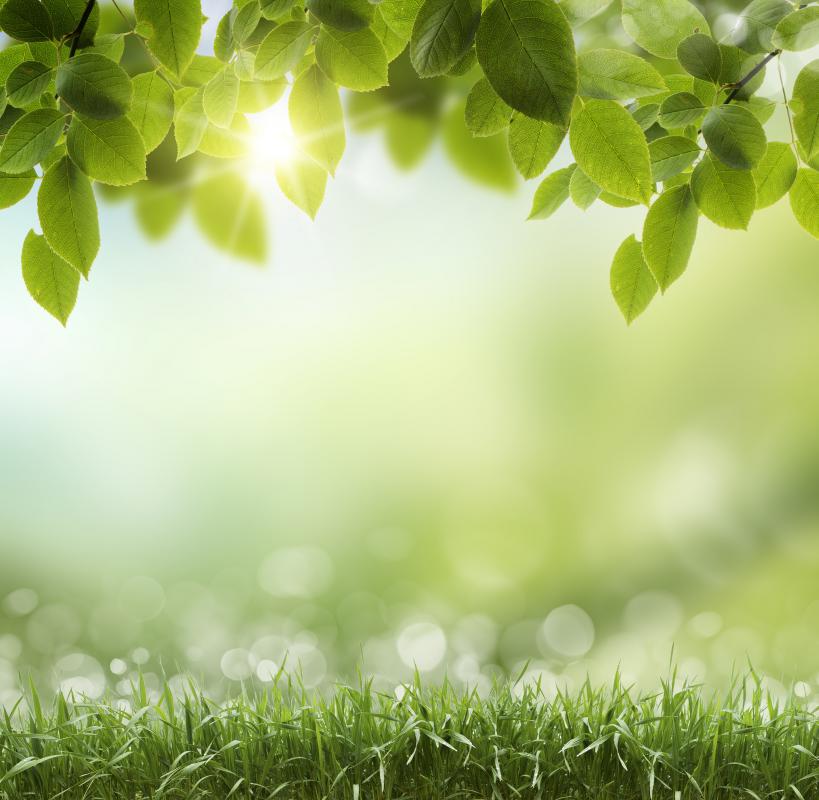At TheHealthBoard, we're committed to delivering accurate, trustworthy information. Our expert-authored content is rigorously fact-checked and sourced from credible authorities. Discover how we uphold the highest standards in providing you with reliable knowledge.
What is Dermal Tissue?
Living organisms have an outside "container" that serves to protect the contents of the organism. In bacteria, the cell wall protects the bacteria's internal structures, such as the ribosomes and nucleoid, as well as helping keep the bacteria's shape, either spherical, rod-shaped or spiral with the exception of mycoplasma bacteria, which do not have cell walls. The skin, which consists of the outer epidermis and the underlying dermis, helps protect the human body from being damaged physically, helps protect the body from bacterial and viral infections and helps protect the body from damage from exposure to ultraviolet rays. Dermal tissue is the outside layer of a plant, with the exception of woody trees and shrubs, which are covered with bark for protection.
Plants have two organ systems. These systems are the shoot system, which is the part of the plant that lives above ground, such as stems and leaves, and the root system. The root system is the part of the plant that grows below the ground, including roots and tubers. In addition, plants are divided into three different tissue groups, vascular tissue, ground tissue and the dermal tissue.

Vascular tissue helps support the plant. In addition, vascular tissue distributes water, minerals, and food products from photosynthesis throughout the plant. Photosynthesis is the process that plants use to convert sunlight to carbohydrates for food. The two main components of vascular tissue are the xylem, which distributes water and minerals throughout the plant from the plant's roots, and phloem, which transports food through the plant.

Ground tissue is the tissue between the vascular tissue and the dermal tissue. In addition to being involved in photosynthesis, ground tissue helps provide the plant with support. This tissue, which consists mainly of parenchyma cells, also has the ability to store food and water.
Dermal tissue is the "outside" or outer part of a plant, which operates to control water and gas exchanges from the plant to the environment outside of the plant. The outside of the dermal tissue is called the epidermis. Epidermis produces a waxy layer called the cuticle which helps keep the plant from losing water. Another part of the epidermis that helps prevent water loss is the epidermal hair. Root hairs increase water intake into the plant while glandular hairs contain substances that the plants use to repel harmful insects.
AS FEATURED ON:
AS FEATURED ON:














Discussion Comments
@fBoyle-- Like the article said, the little hairs can excrete stuff to keep insects away. Some even excrete poison. But the hairs themselves are also great ways to keep insects from eating and harming the plant. I have several plants at home and I've seen insects unable to walk on the stems because of the hairs. They struggle for a while and fall off.
I've always wondered about the waxy surface of plants, and the little hairs too. I guessed that the waxy surface protects the plant from bad weather and the like. But I had no idea that the little hairs on the plant dermal tissue served a purpose too. That's interesting.
In biology class, we talk about human skin as an organ. So it's not just a protective layer to keep out bacteria. It's a living, breathing tissue that serves many other roles as well. Aside from keeping germs out, it excretes toxins and helps regulate body temperature through sweating. It produces oil to moisturize skin and this oil contains anti-bacterial agents. Our skin also carries oxygen to the tissues underneath. And the many nerves that allow us to feel what we touch, they are distributed through our skin and send information directly to our brain. It's quite amazing actually. Many of us don't even think about all of the functions that our skin serves.
Post your comments